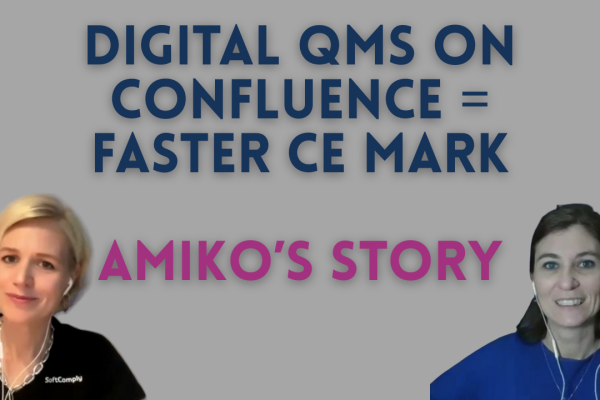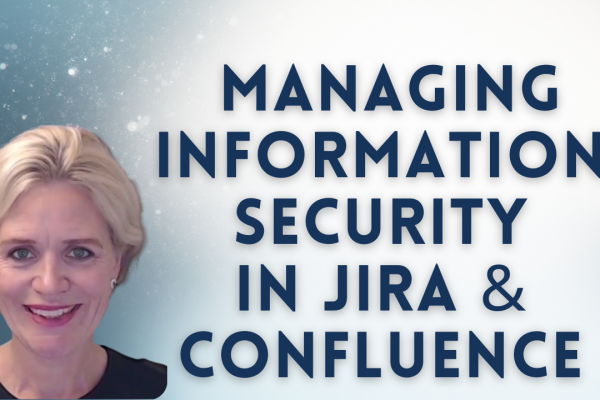Introduction
This medical device compliance guide focuses on the key requirements and strategies for navigating the regulatory landscape. We will cover the role of major regulatory bodies like the FDA, the classification of devices, and the importance of quality management. We will also discuss the challenges of global compliance and offer strategies to overcome them.
Understanding these aspects is essential for anyone involved in the medical device industry. Whether you’re a manufacturer, a quality assurance professional, or a regulatory affairs specialist, this guide provides valuable insights to help you stay compliant and competitive.
The regulatory landscape for medical devices is always changing. New rules and standards emerge, making it crucial for manufacturers to stay up to date. Compliance is not just about meeting legal requirements. It ensures that medical devices are safe and effective for users. It also allows companies to access profitable global markets.
Regulatory Landscape
Navigating the global regulatory landscape for medical devices requires understanding the roles of various regulatory bodies and their requirements.
EU
In the European Union, Medical Devices are regulated by the Medical Device Regulation (MDR) and In-Vitro Diagnostic Medical Devices Regulation (IVDR). These are EU-level laws that apply to all member states.
Enforcement is instead under the remit of the Competent Authorities of each state, e.g. BfArM in Germany, HPRA in Ireland, etc. Competent Authorities are unique governing body belonging to a specific EU Member State, whose authority is limited to that State.
Certification of Quality Systems, auditing and approval of submissions is delegated to Notified Bodies. A notified body is a private organisation designated by an EU country to assess the conformity of certain products before being placed on the market, such as TUV and BSI. Once approved by a Notified Body, a Medical Device can be placed on the market in any member state (pending in certain cases local registration and fees).
Medical devices are classified into three classes based on risk. Classed I, IIa, IIb and III for Medical devices and A, B, C, D for IVD devices.
After leaving the EU, the UK market is controlled directly by the MHRA, using a hybrid system based on the old MDD/IVDD.
USA
In the U.S., the Food and Drug Administration (FDA) plays a critical role. The FDA oversees medical device regulation, ensuring devices are safe and effective before reaching the market.
→ You can find more details on the FDA’s role here.
Medical devices are classified into three classes based on risk. Class I devices are low-risk and usually exempt from premarket notification. Class II devices carry moderate risk and require a 510(k) notification. Class III devices are high-risk and need premarket approval.
→ The FDA provides a detailed overview of this classification system here.
Key regulatory requirements for medical devices include establishment registration and device listing, premarket notification 510(k) or premarket approval (PMA), and Investigational Device Exemption (IDE) for clinical studies. Compliance with Quality System Regulation (QSR), proper labeling, and Medical Device Reporting (MDR) for adverse events are also essential.
→ You can explore these requirements in more detail on the FDA’s website here.
Recent updates from the FDA include the Quality Management System Regulation (QMSR) Final Rule, which aligns with ISO 13485:2016. This aims to streamline quality management practices across the industry and will be effective as of February 2, 2026.
→ For more information, visit the FDA update page.
Regulation of software-based medical devices is evolving, with the FDA providing guidance on cybersecurity, AI/ML, and mobile medical applications. The FDA’s guidance documents can be found here. Software as a Medical Device (SaMD) also falls under these regulations.
→ A comprehensive guide can be found here.
Rest of the World
Internationally, regulatory bodies like the European Medicines Agency (EMA) and Notified Bodies, Health Canada, TGA, etc. play similar roles. Harmonizing global requirements is crucial for manufacturers to ensure compliance across different markets.
Each market has its own classification, reporting system and clinical evaluations, and often specific requirements for the system and classes of devices.
→ For more on international regulations, visit this guide.
An attempt to harmonize auditing efforts consists of the MDSAP program Medical Device Single Audit Program (MDSAP), where the official members are Australia, Canada, USA, Japan and Brazil.
Global Compliance Challenges
Navigating the global regulatory landscape for medical devices poses significant challenges due to the variability in regulations across different regions. Each region has its own regulatory body and standards, such as the FDA in the USA, Health Canada in Canada, and the EU MDR in Europe. These differences can create complexities for manufacturers aiming for global market access.
Challenge 1: Global Variability in Regulations
The regulatory requirements for medical devices differ significantly from one region to another. For instance, the FDA’s regulations in the USA differ from Health Canada’s guidelines and the EU MDR’s stringent requirements in Europe. This variability can create hurdles for manufacturers trying to ensure compliance across multiple markets.
Challenge 2: Technological Advancements and Regulatory Frameworks
Emerging technologies in medical devices often outpace existing regulations, creating a need for updated guidelines. The FDA has issued guidance on AI/ML and mobile applications to address these advancements (Artificial Intelligence and Machine Learning in Software), while the EU has a broader legislation on AI (EU AI Act: first regulation on artificial intelligence | Topics | European Parliament). Proactive dialogue with regulatory agencies can help manufacturers anticipate and adapt to regulatory changes.
Challenge 3: Data Security and Privacy
Data security and privacy are critical in any industry, even more in the medical device industry where patient health data are managed. Implementing strong cybersecurity measures is essential to protect patient data. Compliance with data protection laws like GDPR is mandatory for market access in regions such as the EU.
3 Steps to Overcome Compliance Challenges
For each of the compliance challenge above, there are strategies of overcoming them:
Strategies to Overcome Global Variability
To tackle this global variability, manufacturers can adopt several strategies. First, developing a comprehensive regulatory strategy tailored to each target market is crucial. Partnering with local experts can provide valuable insights into regional regulations and facilitate smoother market entry.
Additionally, robust quality management systems ensure consistent compliance across different regulatory frameworks. Continuous regulatory intelligence helps stay updated on evolving regulations, reducing the risk of non-compliance.
Finally, check how you can benefit from the harmonization of medical device regulations. The Medical Device Single Audit Program (MDSAP) allows a single audit of a medical device manufacturer’s quality management system to satisfy the requirements of multiple regulatory jurisdictions. The EU MDR also supports an international recognition framework. Efforts by IMDRF aim to further harmonize global regulatory systems. For more details, refer to EMA and Gov.uk.
Stay on top of the Emerging Regulatory Requirements and Trends
1. New Technologies & Evolving Regulations
Keep your team informed about the latest developments of regulatory standards and requirements, especially in the areas of emerging technologies:
- AI and Machine Learning Regulations:
- Artificial Intelligence (AI) and Machine Learning (ML) in medical devices pose unique regulatory challenges. The FDA has developed a regulatory framework to address the complexities of AI/ML in medical devices. Similarly, the European Commission is working on the AI Act to ensure safe and effective use of AI in healthcare. ISO/IEC standards are also evolving to provide guidelines for AI applications in the medical field. You can get more insights on these developments from Gov.uk and In Compliance Mag.
- Cybersecurity Standards:
- Cybersecurity in medical devices has become crucial. The FDA provides guidance on cybersecurity measures that medical device manufacturers must follow to ensure the safety and security of their products. The International Medical Device Regulators Forum (IMDRF) also emphasizes cybersecurity principles that align with global standards. Additionally, the IEC 81001-5-1 standard offers a framework for developing and maintaining secure medical devices. For more detailed information, you can refer to the ISO and Gov.uk.
2. Use tools for your Compliance Efforts
Several companies offer their services providing you with regular updates on the changes in the regulatory landscape, and often it is possible to subscribe to regulatory agencies newsletters and change notifications.
In addition to these, consider using the following tools.
- Automated Compliance Monitoring & Data Analytics Tools:
- Continuously scans for changes in regulations and alerts the relevant teams.
- Flag potential issues before they become problems.
- Document management systems ensure that all compliance-related documents are easily accessible and up-to-date.
- Provide insights into compliance trends and assist in decision-making.
3. Continuous Training and Education
Regular training programs keep teams informed about the latest regulatory changes. Offer a mix of seminars and training courses for your team to learn and share knowledge and experiences.
- Comprehensive Training Programs:
- Cover all aspects of compliance, from basic principles to advanced strategies.
- E-learning platforms offer flexibility, allowing employees to learn at their own pace.
- Workshops and Seminars:
- Provide opportunities for hands-on learning and networking.
- Allow employees to discuss challenges and share best practices.
- Professional certifications add value by formally recognizing an individual’s expertise in regulatory compliance.
Manage Data Privacy and Data Security
Effective strategies for managing data security include integrating cybersecurity measures during the design phase of medical devices. Continuous security assessments help identify vulnerabilities and address them promptly. Developing clear protocols for handling patient data ensures compliance with privacy laws. Staying informed on evolving regulations helps manufacturers adapt their security measures accordingly.
Risk management strategies, aligned with standards like ISO 14971, ensure that potential risks are identified and mitigated. Continuous monitoring and updates to security protocols are necessary to address evolving threats.
Tools like SoftComply Risk Manager Plus offer features that help manage your cybersecurity risks and can be further extended to also manage compliance risks in general.
Navigating global compliance challenges requires a robust strategy that addresses regulatory variability, leverages technological advancements, and prioritizes data security. By adopting these strategies, manufacturers can ensure compliance and maintain a competitive edge in the global medical device market.
Key Takeaways
The Regulatory framework for Medical Devices is a complex and evolving world. For the foreseeable future human involvement is certain, given the complexity and interpretability of the regulations. But software tools are rapidly evolving to support companies in automating tasks and facilitating compliance.
Here are key takeaways of navigating the ever-evolving regulatory landscape:
- Updated standards for emerging technologies: Standards are being updated to keep pace with emerging technologies like AI and cybersecurity. These updates ensure that new medical devices meet safety and efficacy requirements. Make sure to keep an eye on the evolution of regulations regarding these emerging technologies.
- Greater international harmonization efforts: Efforts to harmonize regulations globally are increasing. This simplifies compliance for manufacturers operating in multiple regions and ensures a more consistent standard of safety and quality worldwide. Before implementing a regional regulation, make sure how it fits in the global compliance landscape.
- Increased focus on risk management and post-market surveillance: There is a growing emphasis on post-market surveillance and risk management. This ensures that medical devices continue to meet safety standards after they are on the market, protecting patients and users.
In most cases the use of software tools is the only option. A large company with distributed teams cannot use paper-based systems. Traceability of requirements and risks for complex devices using Excel is prone to many human errors. Vulnerability scanning can also only be done with software tools.
This is also the reason why SoftComply offers medical device manufacturers with Document and Risk Management Solutions on Jira and Confluence. These will not only ensure your data is all in one place but also automate and thereby speed up your medical device regulatory compliance.
![]() Schedule an introductory call of the SoftComply solutions, and
Schedule an introductory call of the SoftComply solutions, and
![]() Visit us at Medica in Düsseldorf in November →
Visit us at Medica in Düsseldorf in November → ![]() Hall 13 Stand C88
Hall 13 Stand C88





